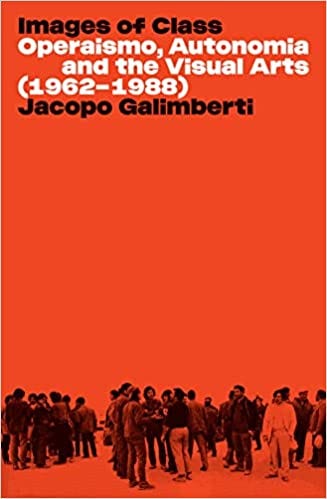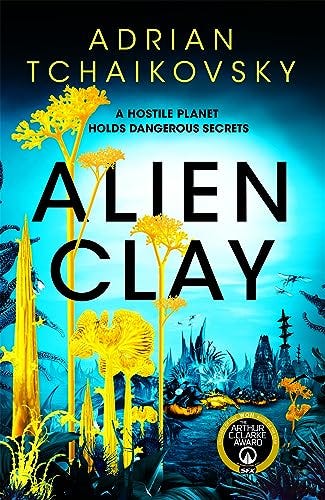Hello everyone, and apologies for the missing issue from last fortnight.
Last week, Paul Weimer over at the Nerds of a Feather zine wrote a detailed and generous review of The Sentence (read it here). Weimer takes the novel on its own terms, and really gets to the heart of some of the things it is trying to do.
This is now the fourth month that The Sentence has been out in the world, and if you’re tempted to get around to it, find it here.
What I’m Reading
Many years ago, I read the Italian oral historian Alessandro Portelli’s wonderful book, The Death of Luigi Trastulli and Other Stories: a set of oral history essays about the chaotic political and social life in post-World War II Italy. At around the same time, I read Leonardo Sciascia’s Equal Danger, which explored the fraught relationship between the revolutionary left and the parliamentary left (among other things!) in 1970s Italy, through the lens of a murder mystery. I didn’t read much more at the time, but these two books left me with an abiding sense of curiosity about those three decades of post-war Italian history, where the entire country seemed to be a cauldron of workers’ movements, radical revolutionaries, and remnants of fascism, and where figures like Antonio Negri loomed larger than life.
At this year’s World Book Fair in Delhi, I got the chance to whet that curiosity a little bit when I came across Jacopo Galimberti’s Images of Class: Operaismo, Autonomia and the Visual Arts (1962-1988) (the World Book Fair, in its heavily corporatised avatar, is a far cry from the haven that it was in my teenage years, but the beauty about it is that you can still chance upon gems like these that you never would elsewhere). This is a book that engages with the various movements in literature, poetry, theatre, painting, and architecture that sprung up around the Italian left wing of the 1960s and 70s, beginning with the “operaismo” (literally, “workerism”). It is a detailed and granular exploration of the interaction between revolutionary politics and the arts, spanning the entire spectrum from rejectionism (“there can never be radical art under capitalism, but only a radical critique of art”) to utopianism (trying to achieve anti-capitalist urban space through architecture, and so on).
While eventually those years of Italian revolutionary politics and aesthetics were snuffed out through State repression (just look at Italian politics now!), Images of Class paints an absolutely fascinating picture of two decades of the most intense artistic debates, where magazines, writers, and movements were born, flourished, debated and fought each other about the most fundamental of questions, and transformed in response to changing conditions. It’s the kind of book that makes you want to live in those times, and to have been an observer and a participant in these world-building projects. Well, we can’t have that, but at least, through Images of Class, we get a snapshot of that time, preserved for posterity.
Another year, another few Tchaikovsky novels that are of the highest standard. I really enjoyed Alien Clay, where Tchaikovsky once again taps into his background in zoology. The penal colony-cum-scientific observation post that is the “hostile planet” mentioned on the front cover is just the setting for Tchaikovsky to take a phenomenon found in our ecology - that is, symbiosis - and run with it to its logical extreme: an alien ecology where the meeting, merging, and blurring of organisms is as frequent and commonplace as tossing together the different ingredients of a salad, with the result that the concept of identity that we are so used to in the human world is rendered completely meaningless. Other writers have gestured to this before, but perhaps not with this level of detail.
I can’t say the same for The Mercy of Gods, however: I definitively did not like this book. I picked it up on the strength of The Expanse, of course, but I don’t think I’ll be reading this series beyond the first book. Its premise - of a very powerful alien species that culls one-eighth of every other species in order to show its power, enslaves the most “functional” among the rest, and only speaks the language of dominance, leaves me cold - no matter how cleverly contrived the narrative arc might shape up to be later in the series. As I think I mentioned earlier, over the last year, for obvious reasons, I’ve simply run out of patience with genre novels where genocide or mass murder is baked into the premise.
A new Keigo Higashino translation - and a Detective Galileo novel, to boot! - was an insta-buy, of course. I won’t say much about the plot, other than observing that if you are a Higashino fan, this has all the elements of what makes him a master of the craft: a murder mystery where the who is resolved in quite a straightforward way two-thirds into the book, but then he hits you with the “how” or the “why” (in this case, the “why”), which leaves you reeling, and realising that you’ve been reading the wrong book all along (in the best of ways). And another exploration into the absolute darkest avenues of the human heart.
The Indian Scene
The annual Locus Magazine’s recommended reading list for 2024 - one of the anticipated beginning-of-the-year events in the industry - came out on February 1. There’s a solid Indian presence there: Prashanth Srivtasa’s The Spice Gate and Amal Singh’s The Garden of Delights were featured in the debut novel category, and yes, The Sentence made it to the best science fiction novel category. There’s a lot of interesting stuff on their in all formats, so give it a look!
Also, Boddhisattva Chattopadhyay is one of the co-editors of his fascinating-looking Routledge Handbook of CoFuturisms, which is available open access.
What’s Happening at Strange Horizons
Check out the call for our special issue on Afrosurrealist SF, and also, a review of Appupen and Laurent Daudet’s graphic novel, The Dream Machine. Appupen and I have been put on so many SF panels together at literary festivals by now, that when we met at the Alliance Literary Festival in Bangalore last week, we bumped fists because for once we were not together on a panel!
Recommendations Corner
I never get tired of shouting about Ray Nayler’s The Mountain in the Sea, one of the best science fiction novels that I’ve read. The Tusks of Extinction is Nayler’s second work of substantive length (this time, a novella). The Tusks of Extinction leans in much more heavily into the themes of climate change and species extinction that were gestured at in The Mountain of the Sea; and in a way, it’s a bit like Jurassic Park meets Tchaikovsky, where we end up occupying the point of view of a resurrected wooly mammoth. I’m not sure if it quite works, but as with everything Nayler writes, whether or not you’re entirely convinced, it is well worth engaging with!









Was missing you, vakeel saab :)